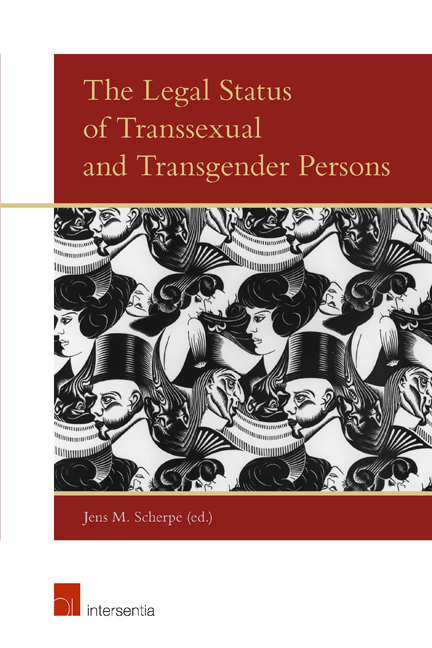Book contents
- Frontmatter
- Dedication
- Preface
- Contents
- List of Contributors
- Introduction
- PART I MEDICAL/PSYCHOLOGICAL VIEWS
- Transgenderism and Transsexuality: Medical and Psychological Viewpoints
- PART II CHRISTIAN VIEWS
- PART III LEGAL VIEWS
- Europe
- Asia
- Australia and New Zealand
- North and South America
- PART IV CONCLUSION
Transgenderism and Transsexuality: Medical and Psychological Viewpoints
from PART I - MEDICAL/PSYCHOLOGICAL VIEWS
Published online by Cambridge University Press: 28 November 2017
- Frontmatter
- Dedication
- Preface
- Contents
- List of Contributors
- Introduction
- PART I MEDICAL/PSYCHOLOGICAL VIEWS
- Transgenderism and Transsexuality: Medical and Psychological Viewpoints
- PART II CHRISTIAN VIEWS
- PART III LEGAL VIEWS
- Europe
- Asia
- Australia and New Zealand
- North and South America
- PART IV CONCLUSION
Summary
HISTORICAL SKETCH
THE DEVELOPMENT OF CLINICAL TERMINOLOGY
The first two clinical cases of the phenomenon later termed transsexualism were described in 1838 by the French psychiatrist Étienne Esquirol, and in 1853 by the German psychiatrist Hieronymus Fränkel. At that time, however, the cases did not attract much public attention. It was only at the end of the 19th century, with the advent of Forensic Psychiatry and Sexology in Austria, Germany and some other European countries, that the phenomenon was studied more closely, and that medical doctors began to think about how they could help their patients. A very influential case study by Carl Westphal, a German psychiatrist, published in 1870, classified his patient as suffering from a delusion. At that time, patients with delusions were usually treated in closed psychiatric hospitals. Persons who would today be classified as male-to-female transsexual individuals, and who engaged in sexual interaction, were – depending on the country in which they were living – at risk of being criminalised for homosexual behaviour and of being sentenced to a term of imprisonment. In Germany, laws against male homosexuality were only revoked at the end of the 1960s, and I have met a number of transsexual persons who served prison sentences for having engaged in sexual partnerships with men before being finally accepted for appropriate treatment, not easily available in Germany in the 1950s.
The first sex change operation, as it was then called, was performed in 1912 in Berlin on a female-to-male transsexual individual. However, it was some years before Magnus Hirschfeld, a pioneer in sexology, referred to the case in the scientific literature. It is my assumption that this delay in reporting may have been due to the fear of the surgeon involved being accused of inflicting grievous bodily harm on a healthy person, which was, and still is, a crime. At that time, the terms transsexualism and transgenderism had not yet been coined and were unknown. A number of further sex reassignment surgeries were performed in Prague (then Czechoslovakia), Berlin and Dresden (Germany) in the 1920s.
- Type
- Chapter
- Information
- The Legal Status of Transsexual and Transgender Persons , pp. 11 - 24Publisher: IntersentiaPrint publication year: 2015



